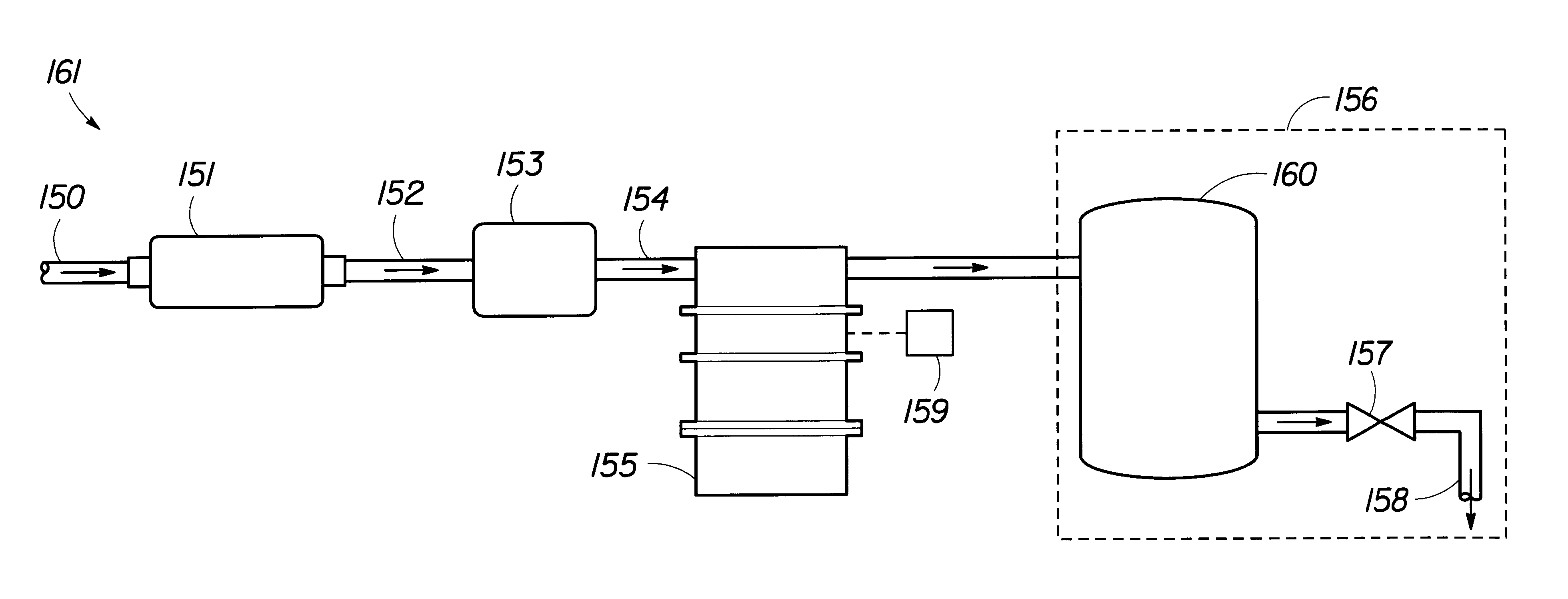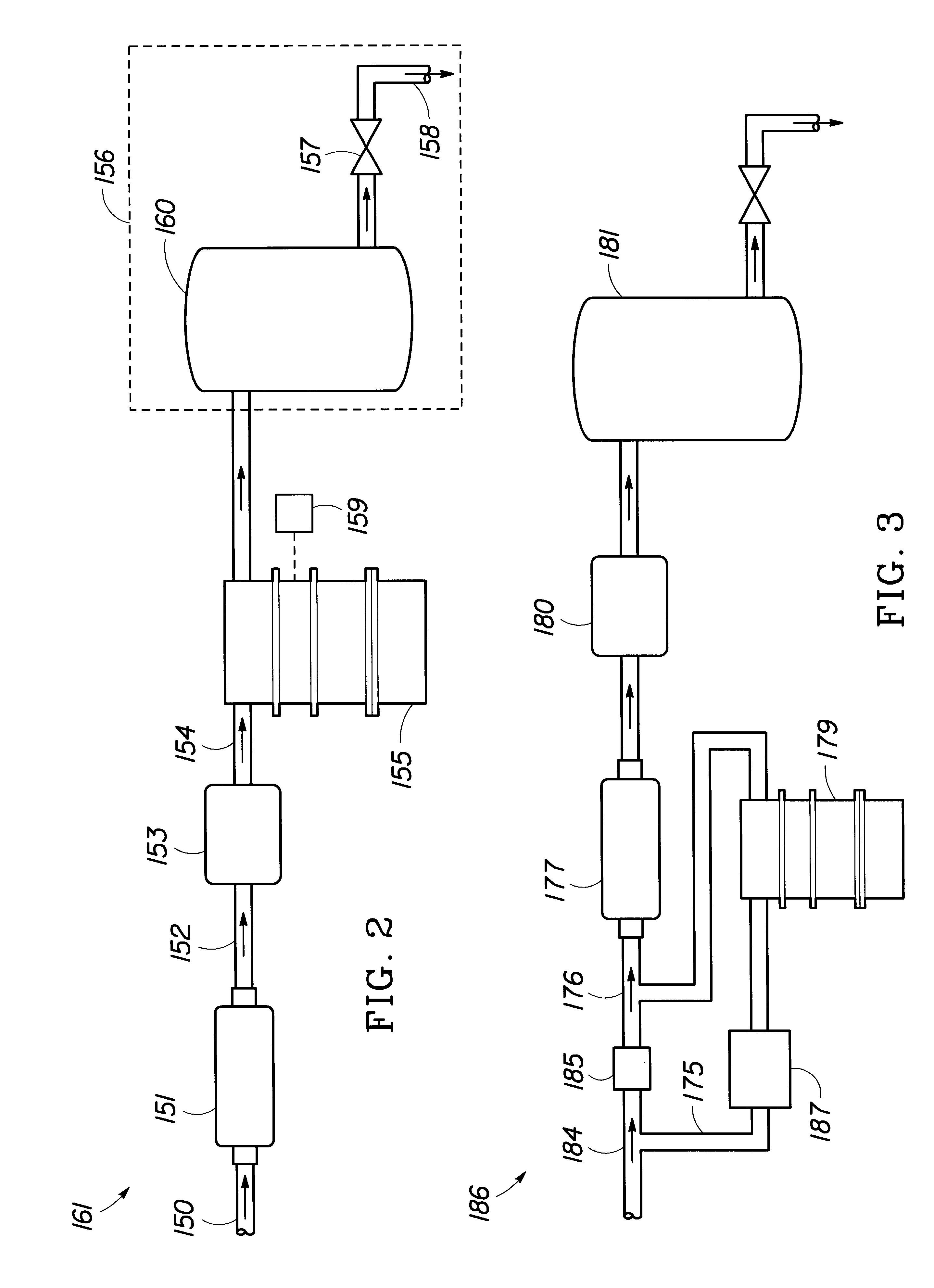Microorganism control of point-of-use potable water sources
- Summary
- Abstract
- Description
- Claims
- Application Information
AI Technical Summary
Benefits of technology
Problems solved by technology
Method used
Image
Examples
Embodiment Construction
An ozone generator was designed and fabricated in accordance with FIG. 9 to produce about 0.16 grams of ozone per 24 hours. A single electrolyzer cell with an active area of approximately 0.08 cm.sup.2 was used to generate and deliver ozone gas directly to a storage reservoir containing reverse osmosis quality water. The system was fabricated from polyvinyl difluoride (PVDF) and was approximately 2 inches in length. The system consisted of six individual pieces: a plastic housing, an 1 / 8" diameter porous titanium anode frit coated with lead dioxide, a 1 / 4" diameter Nafion proton exchange membrane, a 1 / 4" porous stainless steel frit, and a 1 / 2" diameter expanded stainless steel flow field and a plug that is screwed into the bottom of the assembly to hold all the components in the housing. The proton exchange membrane is also used as a gasket to provide sealing between the cathode and anode.
The porous titanium and the porous stainless steel frits are fitted with leads that extend outw...
PUM
| Property | Measurement | Unit |
|---|---|---|
| Pressure | aaaaa | aaaaa |
| Electric potential / voltage | aaaaa | aaaaa |
| Hydrophobicity | aaaaa | aaaaa |
Abstract
Description
Claims
Application Information
 Login to View More
Login to View More - R&D
- Intellectual Property
- Life Sciences
- Materials
- Tech Scout
- Unparalleled Data Quality
- Higher Quality Content
- 60% Fewer Hallucinations
Browse by: Latest US Patents, China's latest patents, Technical Efficacy Thesaurus, Application Domain, Technology Topic, Popular Technical Reports.
© 2025 PatSnap. All rights reserved.Legal|Privacy policy|Modern Slavery Act Transparency Statement|Sitemap|About US| Contact US: help@patsnap.com



